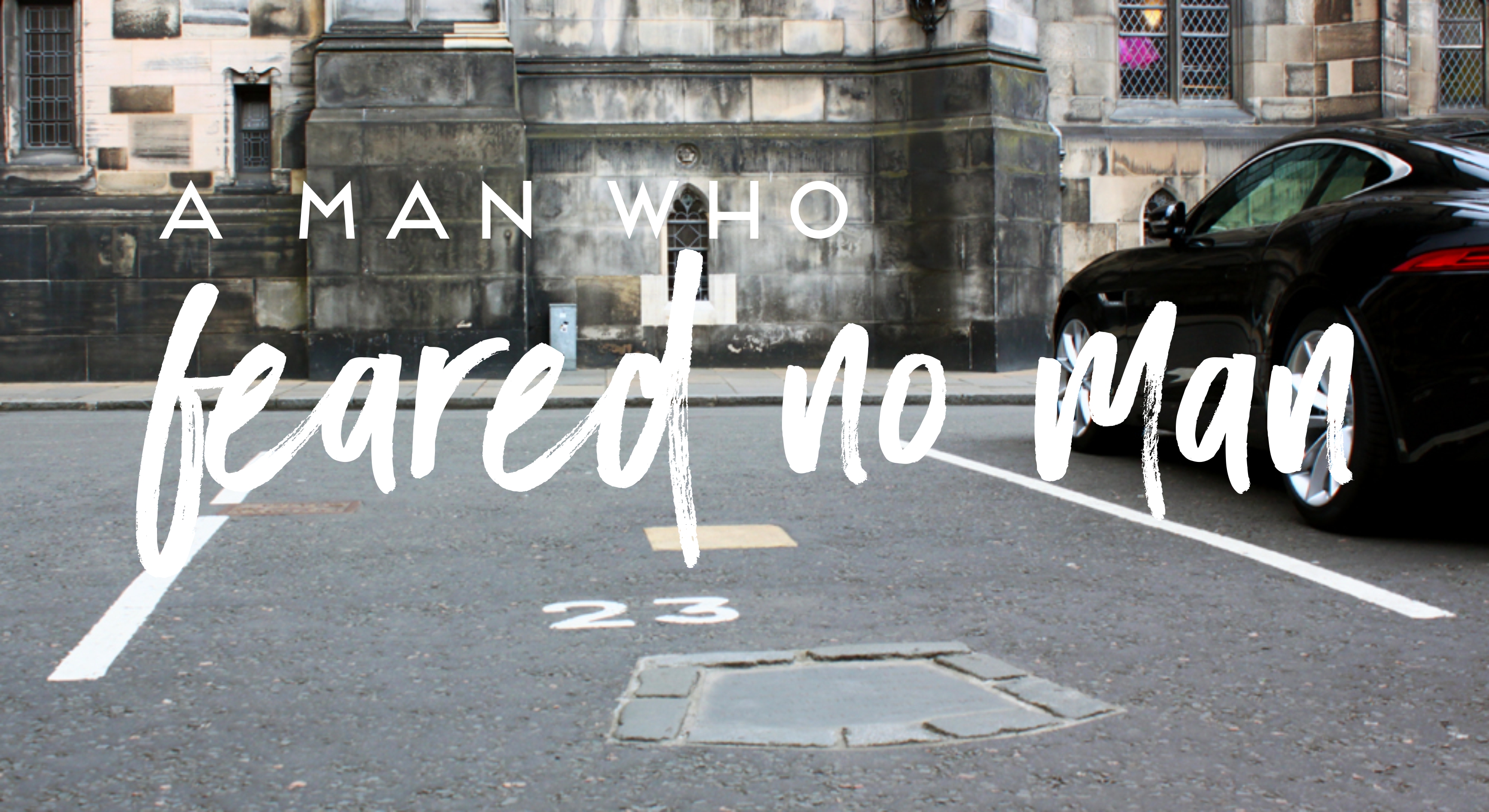
In the city of Edinburgh, Scotland stands the statue of a John Knox. Knox was the key leader of the Scottish Reformation and the founder of Presbyterianism in Scotland. At his graveside, Regent Morton said, “Here lies one who neither flattered nor feared any flesh.” From everything I can learn about Knox, he makes William Wallace of Braveheart fame look like Chicken Little. Knox was known as the “Thundering Scot.”
During a visit to Edinburgh many years ago, we were taken on a tour of the key religious sites in the city. Again, these sites were mostly ignored by the professional tour guide. Edinburgh has a rich history, and Christianity around the world has been impacted by events through the centuries in this ancient city.
In the Scotland of Knox, the Roman Catholic Church owned half of the country’s wealth. There were constant struggles with England, blood feuds were common, and religious corruption was rampant. Someone described the conditions in the 1500s as “medieval semi-barbarism.”
The fires of Protestantism that started with Martin Luther in Germany spread into Scotland. This Protestant “heresy” first came to Scotland at the beginning of the fifteenth century. During this time, John Knox, still an ordained priest, came under the influence of one George Wisehart. In 1546, Wisehart was arrested and burned as a heretic in St. Andrews. What the Cardinal hoped to stop in killing Wisehart, in fact, started a fire in the heart of John Knox. At that point, Knox renounced Catholicism and professed adherence to the Protestant faith.
The Reformation led by John Knox is a witness to the power of God’s Word and a fearless preacher of that Word. After Wisehart’s death, Knox began to preach the Reformation gospel. After his first sermon, his hearers stated, “Others snipped at the branches of Popery; but he strikes at the roots, to destroy the whole.” His goal was to free Christianity from the deformation and disguises of dogma, tradition, ritual, and hierarchy and to return the faith to its original state.
Not long after, Knox was imprisoned as a galley slave. During this time, a picture of the Virgin Mary was brought on board to be kissed by the slaves. When Knox refused, the picture was thrust in his face. Outraged, he threw the “accursed idol” into the river, saying, “Let our Lady learn to swim.”
After nineteen months, he was released and found his way to England for the next five years. While in England, Knox continued to preach passionately. He was appointed as one of six chaplains to the Protestant King Edward the VI. After Edward’s death, Catholic Mary assumed the throne. Mary had a deep resentment towards her father and Protestants. Soon Knox left England. During this time of exile, he wrote extensively and had a preaching and pastoral ministry. Finally, in May of 1559, he returned to Edinburgh to stay. Immediately, he stepped into the role of leader of the reformers.
On August 17, 1560, the Scottish Parliament accepted the Reformed confession of faith drawn up by Knox and others. The document is called “The Confession of Faith Professed and Believed by the Protestants within the Realm of Scotland.” I have stood on the site where the reformers signed that covenant. In that one act, Protestantism was established as the national religion. “The Confession” remained the authorized Scottish creed for two hundred years.
But the problems were not over. Mary Queen of Scots was a Catholic, and she and Knox would do battle many times over many issues. Knox had at least five “conversations” with the queen. Whether in the pulpit or the palace, Knox thundered against Mary. He wasn’t interested in being politically correct; he embodied John the Baptist. In 1560, John Knox became the minister of the Church of St. Giles, only a half mile from Holyrood Palace where Mary Queen of Scots lived.
Some historians have tried to criticize Knox for his behavior and language in the presence of the Queen. However, if one reads these accounts objectively, it is understood that Knox was fighting for the faith, not just discussing differences with Her Majesty. One person said, “The voice of one man, John Knox, is able in one hour to put more life in us than five hundred trumpets continually blustering in our ears.”
Queen Mary tried to win Knox’s favor. Then she sought to find him guilty of treason. At the trial, Mary acted as prosecutor. Knox was acquitted. Knox called Mary a slave of Satan. Within five years, Mary was gone. She abdicated the throne and fled to England.
Today, Knox is buried in a parking lot – in space 23 behind St. Giles Cathedral. While there are statues to Knox in Edinburgh, there are no monuments to him. Dr. Charles D. Brokenshire writes, “Scotland has erected no monument on the grave of John Knox, for Scotland is his monument. He was courageous and true.”
Being an American with a Scottish heritage, I think this is very interesting. Thanks for the history lesson!
I am happy to have read your sermons. Thanks